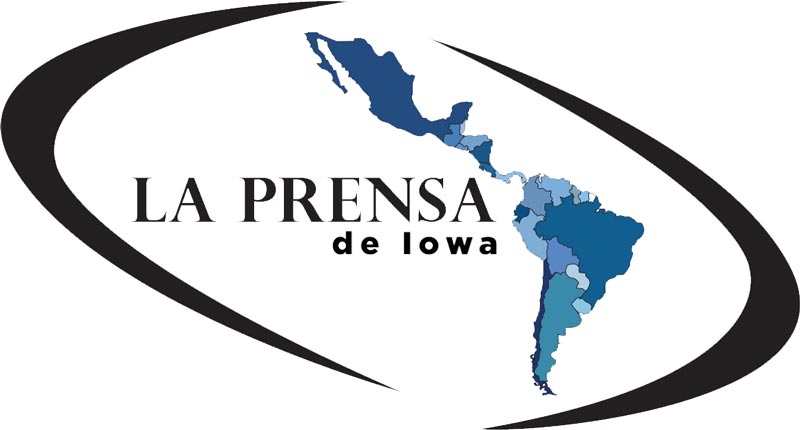Tradiciones y rituales de países latinoamericanos para recibir el Año Nuevo
/Redacción
LA PRENSA Iowa
La historia del Año Nuevo está relacionada con el nacimiento de Jesucristo y con la institución del calendario gregoriano en 1582. Dionisio el Exiguo, un monje erudito que vivió alrededor del año 460 d. C, defendió y propulsó la idea de contar los años a partir del nacimiento de Jesús.
La celebración del día de Año Nuevo en las culturas occidentales se remonta a la época romana, cuando el día se dedicaba a Jano, el dios de dos rostros de las transiciones y los comienzos: un rostro observa hacia delante y el otro hacia atrás. El mes de enero recibe su nombre de Jano.
Nicaragua y la quema de "El Viejo" o "La Vieja" en Año Nuevo
En Nicaragua destaca una tradición que cada año se realiza con más fuerza: la popular quema de “El Viejo” o “La Vieja”, unos muñecos hechos con madera y algodón, vestidos con ropa vieja, que suelen representarse fumando o tomando licor. La idea, al igual que en todos los países latinoamericanos donde se practica algo parecido, es también dejar atrás lo malo y empezar desde cero positivamente el nuevo calendario.
Otros nicaragüenses menos tradicionales, aunque también supersticiosos, siguen el ritual de Nochevieja de inundar la casa con aromas a canela que garanticen la tranquilidad en el hogar y alejen cualquier tensión. También en Nicaragua existen otros rituales para Fin de Año como barrer la casa para alejar las malas vibras o tomar la copa del brindis con la mano derecha -incluso si eres zurdo- mientras se dan tres saltitos con el pie derecho para tener buena suerte durante el año.
Ritual para el Año Nuevo en el Salvador: huevos que atraen dinero y prosperidad
La costumbre más extendida en El Salvador es romper un huevo en un vaso de agua y dejarlo toda la noche en la ventana al aire libre. Por la mañana, la figura que revele el huevo será lo que te traerá la fortuna el año siguiente. Otro ritual de Nochevieja consiste en ponerse la ropa interior al revés durante las últimas horas del año saliente. Cuando ya es año nuevo, se coloca en su forma habitual. De esta forma tendremos los armarios llenos de nueva ropa todo el año.
Guatemala: ritos de buena suerte y joyas que llaman al dinero
Todo aquel que posea una joya en Guatemala, si es posible de oro, tiene que llévala puesta para recibir el nuevo año, de acuerdo con la creencia de que este ritual nos procura dinero y prosperidad. Al mediodía del 1 de enero, los guatemaltecos salen a mirar el cielo y contar cuántas nubes ven, al tiempo que rezan en silencio, siendo el total la suma de dinero que ganarán en el año venidero. Aquí también es muy popular el ritual de Nochevieja de las maletas, que en Guatemala se llenan de ropa y se colocan detrás de la puerta principal, con el fin de que el nuevo año traiga viajes y buenas experiencias para la familia. Se piensa que los niños guatemaltecos tienen que recibir el año estrenando alguna prenda, de lo contrario, no tendrán ropa nueva durante el año: este es su particular ritual. Nochevieja destaca allí por esta costumbre, que se ha trasladado al inicio de cada año escolar, cuando los menores lucen su ropa y materiales para conseguir un buen año estudiantil.
Ritos o tradiciones hondureñas:
Algunos más conocidos que otros, los rituales forman parte importante de un sector de la sociedad hondureña para despedir el año viejo y dar la bienvenida al año nuevo.
Entre los rituales más conocidos que realizan los hondureños en Nochevieja se encuentra el comer 12 uvas a las 12 de la noche. Por cada uva que se come se debe pedir un deseo o marcar un propósito del año nuevo.
Otro ritual conocido es el usar ropa interior de color amarillo o rojo, en cada caso se pide por dinero o prosperidad o por suerte en el amor.
También destaca el ritual de la maleta el cual consiste en salir corriendo de la casa con una maleta justo a las 12 de la noche como una antesala a un año de muchos viajes.
La quema de monigotes también es un ritual tradicional en el país centroamericano ya que la quema de una figura humana hecha a base de pólvora y vestimenta vieja se deja atrás todo lo malo del año salidero. A este ritual se le añade el hecho que cada año las figuras pueden representar un personaje de la sociedad como la figura de un muñeco del Presidente en turno.
Entre los rituales con menor práctica se encuentra la limpia con huevo el cual consiste en dejar al lado de una ventana, puerta o incluso debajo la cama un vaso con agua y un huevo, la yema del mismo puede adoptar diferentes formas y colores, eso da una lectura de como estuvo la limpia de la persona que hace este tipo de práctica.
Un poco menos conocido es el ritual del agua el cual consiste en lanzar agua por la ventana al ritmo de las 12 campanadas de medianoche y con ellos se ahuyentan las penas del año que termina.
Otro ritual que puede tener variaciones es el de colocar granos básicos en las esquinas de las casas o abrazar a los seres queridos con un puñado para que exista prosperidad en el hogar.
Conocidos o no, estos son algunos de los rituales que acompañan a los hondureños en la Nochevieja.
Cabe destacar que, estas prácticas no corresponden a la mayoría de la sociedad, pero sí hay quienes las efectúan con la creencia que se cumplirá lo que piden. Las mismas no son aceptadas por las iglesias que exhortan al recogimiento espiritual y a la celebración en familia.
Adicionalmente los rituales pueden tener variaciones ya que se trata de creencias que han sido transmitidas de generación en generación y con el paso del tiempo han sufrido cambios según sea la conveniencia de quien las practica.
Rituales de nuevo año en Costa Rica:
1. Tirar un vaso de agua o un balde a la calle. Esta tradición dice que ahuyenta las penas del año anterior y da lugar a un año próspero.
2. Sacar las valijas o maletas a la calle, si quieres viajar el 31 saca el equipaje un rato a la calle.
3. Ponerte monedas en el zapato atraerá el dinero en el nuevo año.
4. Comer una uva por cada campanada. Es una tradición heredada de España, en la que se comen uvas o pasas de uva y se cree que es señal de un año próspero.
5. Echar un anillo de oro en la copa de champagne. Para la prosperidad y el dinero la tradición indica que se debe echar un anillo de oro en la copa de champagne.
6. Salta de una silla y cae con el pie derecho. Aparentemente esa práctica hará que comiences el año con el pie derecho.
7. Siéntate y levántate con las doce campanadas. Esto logrará que te cases el año próximo.
8. Prende velas de colores. Cada color tiene un significado diferente. Al parecer, las amarillas prosperidad, las rojas suerte en el amor, blancas para la claridad y espiritualidad, las verdes mejoran y mantienen la salud física y mental, mientras que las naranjas son para la sabiduría e inteligencia.
9. Cambia prendas con tu pareja. Esto hará que en el nuevo año mantengan una relación estrecha.
10. Usa lencería de colores. Los interiores rosas, rojos o amarillos dan suerte y pasión según el país de origen.
Tradición de Nochevieja en México: un deseo por uva
En México, al igual que en el resto de Latinoamérica, reciben el año nuevo con fiesta y alegría, y además comparte con España los ritos de Fin de Año de llevar ropa interior de color y asistir a misa para recibir la bendición. Otro de los rituales de Año Nuevo comunes entre ambos países es la costumbre de comer uvas en Nochevieja justo antes de su brindis de Fin de Año, pero con una diferencia clave. Y es que en México el ritmo no lo marca la televisión y antes de cada uva se pide un deseo. Si se quiere pedir amor, la ropa interior es roja. Si lo que se busca es un ritual para el dinero, entonces tiene que ser amarilla.
Para atraer la abundancia, los mexicanos colocan un borreguito de peluche o similar en la puerta de sus casas
Una vez llega la medianoche, los mexicanos sacan a relucir otro de sus rituales para Año Nuevo: barren la casa para espantar todo lo malo del año pasado y, al igual que en Ecuador, si desean viajar sacan la maleta fuera de casa. Algo típico solo de algunas regiones de México es colocar un borreguito –de peluche o de otros materiales– encima de la puerta principal y hacia el interior de la casa como ritual para atraer la abundancia. Comparten también con Perú o Venezuela la tradición de elaborar un muñeco hecho con trapos viejos y prenderle fuego para simbolizar que dejamos atrás todo lo malo que ha tenido lugar en el año anterior.
Translation
Traditions and rituals of Latin American countries to receive the New Year
Redaction
LA PRENSA IOWA
The history of the New Year is related to the birth of Jesus Christ and the institution of the Gregorian calendar in 1582. Dionysius the Meager, a learned monk who lived around AD 460. C, defended and promoted the idea of counting the years from the birth of Jesus.
The celebration of New Year's Day in Western cultures dates back to Roman times, when the day was dedicated to Janus, the two-faced god of transitions and beginnings: one face looks forward and the other looks back. The month of January is named after Janus.
Nicaragua and the burning of "El Viejo" or "La Vieja" in New Year
In Nicaragua, a tradition stands out that is carried out with more force every year: the popular burning of "El Viejo" or "La Vieja", dolls made of wood and cotton, dressed in old clothes, which are usually represented smoking or drinking liquor. The idea, as in all Latin American countries where something similar is practiced, is also to leave the bad behind and start the new calendar positively from scratch.
Other less traditional Nicaraguans, although also superstitious, follow the New Year's Eve ritual of flooding the house with aromas of cinnamon that guarantee tranquility in the home and remove any tension. Also in Nicaragua there are other rituals for New Year's Eve, such as sweeping the house to ward off bad vibes or taking the toast glass with your right hand -even if you are left-handed- while you hop three times with your right foot for good luck during New Year's Eve. year.
Ritual for the New Year in El Salvador: eggs that attract money and prosperity
The most widespread custom in El Salvador is to break an egg into a glass of water and leave it overnight on the window in the open air. In the morning, the figure that the egg reveals will be what will bring you fortune the following year. Another New Year's Eve ritual consists of putting on your underwear inside out during the last hours of the outgoing year. When it is already the new year, it is placed in its usual form. In this way we will have closets full of new clothes all year long.
Guatemala: rites of good luck and jewelry that calls for money
Everyone who owns a piece of jewelry in Guatemala, if possible made of gold, must wear it to receive the new year, according to the belief that this ritual brings us money and prosperity. At noon on January 1, Guatemalans go out to look at the sky and count how many clouds they see, while praying silently, the total being the amount of money they will earn in the coming year. The New Year's Eve ritual of suitcases is also very popular here, which in Guatemala are filled with clothes and placed behind the main door, so that the new year brings trips and good experiences for the family. It is thought that Guatemalan children have to receive the year by wearing some garment for the first time, otherwise, they will not have new clothes during the year: this is their particular ritual. New Year's Eve stands out there for this custom, which has been transferred to the beginning of each school year, when minors wear their clothes and materials to achieve a good student year.
Honduran rites or traditions:
Some more well-known than others, the rituals are an important part of a sector of Honduran society to say goodbye to the old year and welcome the new year.
Among the best-known rituals that Hondurans perform on New Year's Eve is eating 12 grapes at 12 midnight. For each grape that is eaten, a wish must be made or a New Year's resolution must be marked.
Another well-known ritual is wearing yellow or red underwear, in each case it is asked for money or prosperity or luck in love.
The ritual of the suitcase also stands out, which consists of running out of the house with a suitcase at exactly 12 at night as a prelude to a year of many trips.
The burning of stick figures is also a traditional ritual in the Central American country since the burning of a human figure made from gunpowder and old clothing leaves behind all the bad things of the coming year. Added to this ritual is the fact that every year the figures can represent a character from the society such as the figure of a doll of the President in office.
Among the rituals with less practice is the clean with egg which consists of leaving a glass of water and an egg next to a window, door or even under the bed, the yolk of which can take different shapes and colors, that gives a reading of how the person who does this type of practice was clean.
A little less well known is the water ritual, which consists of throwing water through the window to the rhythm of the 12 strokes of midnight and with them the sorrows of the year that is ending are chased away.
Another ritual that can have variations is to place basic grains in the corners of the houses or hug loved ones with a handful so that there is prosperity in the home.
Known or not, these are some of the rituals that accompany Hondurans on New Year's Eve.
It should be noted that these practices do not correspond to the majority of society, but there are those who do them with the belief that what they ask for will be fulfilled. They are not accepted by churches that encourage spiritual recollection and family celebration.
Additionally, the rituals can have variations since they are beliefs that have been transmitted from generation to generation and with the passage of time have undergone changes according to the convenience of those who practice them.
New Year Rituals in Costa Rica:
1. Throw a glass of water or a bucket into the street. This tradition says that it drives away the sorrows of the previous year and gives rise to a prosperous year.
2. Take the suitcases or suitcases to the street, if you want to travel on the 31st, take the luggage out for a while to the street.
3. Putting coins in your shoe will attract money in the new year.
4. Eat a grape for each chime. It is a tradition inherited from Spain, in which grapes or raisins are eaten and it is believed that it is a sign of a prosperous year.
5. Put a gold ring in a glass of champagne. For prosperity and money, tradition indicates that a gold ring should be put in the glass of champagne.
6. Jumps from a chair and lands on the right foot. Apparently that practice will make you start the year on the right foot.
7. Sit down and get up with the twelve chimes. This will get you married next year.
8. Light colored candles. Each color has a different meaning. Apparently, the yellow ones for prosperity, the red ones for luck in love, white for clarity and spirituality, the green ones improve and maintain physical and mental health, while the orange ones are for wisdom and intelligence.
9. Change clothes with your partner. This will make them maintain a close relationship in the new year.
10. Wear colored lingerie. The pink, red or yellow interiors give luck and passion depending on the country of origin.
New Year's Eve tradition in Mexico: a wish for a grape
In Mexico, as in the rest of Latin America, they welcome the new year with celebration and joy, and also share with Spain the New Year's rites of wearing colored underwear and attending mass to receive the blessing. Another common New Year ritual between the two countries is the custom of eating grapes on New Year's Eve just before your New Year's Eve toast, but with one key difference. And it is that in Mexico the rhythm is not set by television and before each grape a wish is made. If you want to ask for love, the underwear is red. If what you are looking for is a ritual for money, then it has to be yellow.
To attract abundance, Mexicans place a stuffed animal or similar at the door of their houses.
Once midnight arrives, Mexicans bring out another of their rituals for New Years: they sweep the house to scare away all the bad things of the past year and, as in Ecuador, if they want to travel they take their suitcases out of the house. Something typical only of some regions of Mexico is to place a sheep –stuffed or made of other materials– above the front door and towards the interior of the house as a ritual to attract abundance. They also share with Peru or Venezuela the tradition of making a doll made with old rags and setting it on fire to symbolize that we leave behind all the bad things that have happened in the previous year.















































